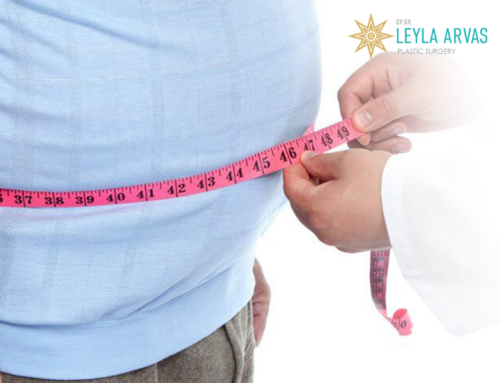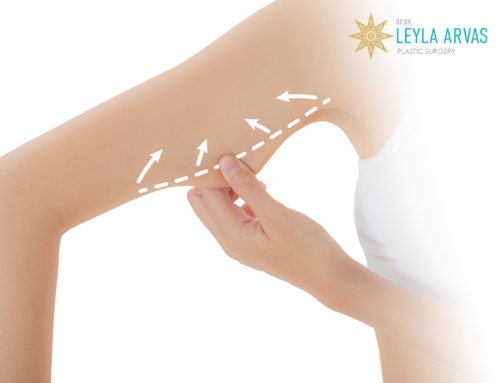[ez-toc]

Male Breast Reduction (Gynaecomastia), which can occur at any age, is the enlargement of the breast caused by a decrease in the hormone testosterone in males. Gynecomastia can manifest as localized fat accumulation, gland tissue growth, extra mammal skin, excess in one breast, or both.
First, before the operation, the cause of the gynecomastia should be determined. This may be brought on by hormonal changes, obesity, hereditary factors, or adverse pharmacological effects. Surgery is used to treat all instances other than those that were brought on by hormonal factors. Overgrown breasts may be permanently removed following the surgery to be performed under general anesthesia.
The liposuction technique can be used to treat gynecomastia. VaserLiposuction may also be necessary if the patient has an excess of mammary texture. After the specialized plastic surgeon examines the patient, the procedure is chosen.
Gynecomastia surgery must be performed in the operating room under general anesthesia. After the procedure, you must wear the corset that the expert doctor prescribed for about a month. After the procedure, the treated region may exhibit swelling, edema, and bruising. After the third week, these decrease and recover. The form of the breasts will return after about three months.
What’s Male Breast Reduction (Gynaecomastia)?
Gynecomastia affects males by enlarging the glandular tissue in their breasts, which occasionally causes discomfort at the nipple. It frequently occurs in adolescence or in middle to late life and is brought on by an imbalance in hormones.
It’s important to distinguish between gynecomastia and breast growth brought on by fat deposits in overweight males. While the illness frequently resolves on its own, there are therapies available in circumstances when it is severe or persistent. When an underlying health issue causes gynecomastia, treating that issue typically helps the gynecomastia as well.
Due to the typical hormonal changes that take place throughout puberty, up to 70% of boys in the early to middle stages of the condition develop gynecomastia. Additionally prevalent in middle-aged and older males are gynecomastia. Up to 65% of the men in this demographic are impacted.
Symptoms And Diagnosis Of Gynecomastia
Gynecomastia often affects males and is characterized by bilateral breast growth. Since unilateral breast growth indicates a more serious issue, it needs to be controlled by a doctor as soon as it is seen. Due to fatty deposits or an increase in breast tissue that does not typically occur in males, male breast tissue can be detected in gynecomastia.
Male breast tissue growth is typically initially seen as a visual alteration and is typically attributed to weight increase. However, males may experience breast augmentation owing to breast tissue development even if they do not gain weight. The breast tissue development is still somewhat perceptible when touched.
Gynecomastia can occur in adolescents, the elderly, anabolic steroid and androgen users, those with renal, liver, or thyroid illness, as well as people who use these substances regularly. Your physical examination results and the medical background will be discussed with you by your doctor. Your doctor may also request additional tests to rule out other illnesses.
The most crucial diagnostic technique for determining whether breast expansion is caused by fat or mammary gland development is breast ultrasonography. Any problematic condition identified during an ultrasound may warrant the request for additional, more thorough testing like a mammogram.
Your overall health, medical history, test results, and age will all be taken into consideration by your doctor as they arrange the best procedure for you.
What Causes Gynecomastia?
The illness known as gynecomastia in males is brought on by irregular or out-of-balance estrogen and testosterone levels. Gynecomastia develops when the male body produces a greater quantity of estrogen hormones than testosterone hormones or vice versa. This hormone alteration may occur for a variety of causes. There is no alternative condition, and the majority of these alterations are normal.
Hormonal Imbalances
Human sex traits are regulated by the hormones testosterone and estrogen. While the estrogen hormone governs feminine features like breast growth, the testosterone hormone dictates masculine traits like muscle mass and body hair. Men produce a little quantity of the hormone estrogen. Gynecomastia may develop when there is an increase in the direction of estrogen when the balance of testosterone and estrogen hormones in men is upset.
Due to the estrogen, their moms gave birth to, more than 50% of kids are born with huge mammals. After delivery, large breast tissue naturally shrinks in two to three weeks.
Gynecomastia frequently develops as a result of hormonal imbalances throughout adolescence. 90% of the time, swollen breast tissue shrinks back to its pre-swelling state between six months to two years. Gynecomastia is more common in men between the ages of 50 and 69. Gynecomastia affects one in four males between the ages of 50 and 69.
Candidates For Gynecomastia
If you are at least 18 years old, have a BMI of less than 30, have grade 2 or grade 3 gynecomastia, and have a gynecomastia size of at least 2 cm. The following scale will be used by the doctor to assess how much breast tissue is present in your chest:
- Grade 1: Slightly flattened breasts with no discernible edema
- Grade 2: Minor edema beneath the nipple.
- Grade 3: Both nipples have some moderate puffiness.
- Patients who are male and whose condition cannot be cured by alternative medicine; Those without a life-threatening sickness or disorders that inhibit healing;
- Males complain of enlarging breasts and men who are physically well and of normal weight.
If you satisfy all of these requirements, you may proceed with Gynecomastia Surgery in Turkey.
How Does Gynecomastia Work?
It should be determined whether the patient has an underlying hormonal issue before beginning gynecomastia therapy. Therefore, a person should initially see an endocrinologist if they think they may have gynecomastia.
Options for gynecomastia therapy are based on the type of condition. Gynecomastia can be categorized in a variety of ways. The Nydick classification is used to evaluate the progression and response to therapy of gynecomastia in teenagers. According to this categorization, the size of the glandular tissue disc beneath the brown ring (areola) on the nipple determines the kind of gynecomastia. It would be better to notify the patient and wait for it to pass on its own in teenagers with a disc diameter of less than 4 cm. However, there is a signal to begin therapy if the patient’s complaint persists for more than 4 years or if the clinical findings that concern the patient worsened. Medical therapy is possible if the patient’s disc measures between 4-6 cm. It is advised to undergo surgery when the disc diameter is greater than 6 cm.
The patient’s age, hormonal state, and underlying medical conditions are taken into consideration while planning medical treatments. The most often prescribed medication in medical care is tamoxifen. In approximately two weeks, it starts to work. Every month while taking the medicine, the patient should be properly monitored. Adults with gynecomastia who have had it for longer than a year do not benefit from this medication.
What To Expect After Gynecomastia?
Depending on the surgical approach used, several processes are encountered following gynecomastia surgery. The recovery period is quite comfortable if vaser or laser liposuction procedures are chosen for the procedure. After applying vaser and laser liposuction for the formation of gynecomastia brought on by fatty tissue, the patient has effective changes after approximately 3 weeks and is able to do a variety of activities with ease.
When surgery is necessary, it is often done under general anesthesia, however, in some circumstances, local anesthetic may be recommended. After the procedure, the patient may leave the hospital the same day. The patient might need to stay under monitoring overnight depending on the type of general anesthetic, but this is not very typical.
After gynecomastia surgery, edema and swelling are typical in the region. Within a week, these forms disappear on their own. After the procedure, there can be some little muscular soreness. After gynecomastia surgery, the patient should rest for three days and avoid excessive arm and shoulder movement for the comfort and healing process. You can take a shower, return to work, and go for short walks on the third day after surgery, provided it doesn’t take too long.
Should I Wear Corset After Gynecomastia?
After gynecomastia operations, a medical device called a corset gynecomastia should be used. The use of this corset continuously following gynecomastia surgery is one of the most crucial aspects. This corset, which is very easy to use, should be worn right away following the procedure and should be worn constantly for as long as your doctor specifies (2-3 weeks). After the third week, it is best to only wear the corset during the day, particularly while engaging in strenuous activities. This time frame is around six weeks.
Gynecomastia Prices In Turkey
It is illegal for facilities that have received Ministry of Health accreditation to list pricing on their website. In order to reach our polyclinic and learn more about the costs of our gynecomastia surgery, please call 0212 241 46 24.





